I have an shiny app that ask the user to upload a file (a tabulated file with data), then it renders this file into a table and the user can filter some values based on numericInput, selectInput, and textAreaInput. The user has to select the filters and then press a button in order to filter the table.
There is no sequential filtering, i.e, the user can fill all the filters or just one. Every time the user choose a filter the value of the other filters get updated (selectInput inputs) and this is the behaviour I want. However, once the Filter button is pressed, I can't see the previous selection and also I can't reset the filters.
What I would like to achieve is to maintain the actual behaviour when updating the filters, i.e, once I choose a filter and press the filter button the other selectInput choices are automatically updated, BUT I want to keep track of the filters choices, so the user can see the filters he/she has selected. That was what I was expecting but everytime I press the button Filter it seems that the filter tab is rendered again.
Here is my app,
library(shiny)
library(vroom)
library(dplyr)
library(shinycssloaders)
library(shinydashboard)
library(shinydashboardPlus)
library(tidyr)
header <- dashboardHeader()
sidebar <- dashboardSidebar(width = 450,
sidebarMenu(id="tabs",
menuItem("Filtros", tabName="filtros", icon = icon("bar-chart-o")),
uiOutput("filtros")
)
)
body <- dashboardBody(
tabItems(
tabItem(tabName="filtros",
fluidRow(
column(12,dataTableOutput("tabla_julio") %>% withSpinner(color="#0dc5c1"))
)
)
)
)
ui <- dashboardPagePlus(enable_preloader = TRUE, sidebar_fullCollapse = TRUE, header, sidebar, body)
server = function(input, output, session) {
#Create the choices for sample input
vals <- reactiveValues(data=NULL)
vals$data <- iris
output$filtros <- renderUI({
datos <- vals$data
conditionalPanel("input.tabs == 'filtros'",
tagList(
div(style="display: inline-block;vertical-align:top; width: 221px;",numericInput(inputId="Sepal.Length", label="Sepal.Length", value=NA, min = NA, max = NA, step = NA)),
div(
div(style="display: inline-block;vertical-align:top; width: 224px;", selectInput(inputId = "Species", label = "Species", width = "220", choices=unique(datos$Species),
selected = NULL, multiple = TRUE, selectize = TRUE, size = NULL))
)
),
actionButton("filtrar", "Filter")
)
})
# create reactiveValues
vals <- reactiveValues(data=NULL)
vals$data <- iris
# Filter data
observeEvent(input$filtrar, {
tib <- vals$data
if (!is.na(input$Sepal.Length)){
tib <- tib %>% dplyr::filter(!Sepal.Length >= input$Sepal.Length)
print(head(tib))
} else { tib <- tib }
# Filter
if (!is.null(input$Species)){
toMatch <- paste0("\\b", input$Species, "\\b")
matches <- unique(grep(paste(toMatch,collapse="|"), tib$Species, value=TRUE))
tib <- tib %>% dplyr::filter(Species %in% matches)
} else { tib <- tib}
tib -> vals$data
print(head(tib, n=15))
})
# Reactive function creating the DT output object
output$tabla_julio <- DT::renderDataTable({
DT::datatable(vals$data)
})
}
shinyApp(ui, server)
